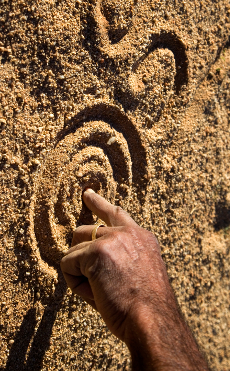Single ridge sense detected
 New research shows how incredibly sensitive the human finger is.
New research shows how incredibly sensitive the human finger is.
Each small ridge that makes up a fingerprint can detect touch individually, according to new research.
The hand contains tens of thousands of sensory neurons. Each neuron tunes in to a small surface area on the skin — a receptive field — and detects touch, vibration, pressure, and other tactile stimuli.
The human hand possesses a refined sense of touch, but the exact sensitivity of a single sensory neuron has not been studied before.
Researchers have now measured the electrical activity of the sensory neurons in human fingertips by stimulating them with raised dots swept over the skin.
The research team calculated the detection areas of the sensory neurons and mapped them onto the fingerprints. The width of the detection areas matched the width of a single fingerprint ridge.
These areas stayed on the same fingerprint ridges during different scanning speeds and directions, indicating that they are anchored to the fingerprint ridges.
The overlap of receptive fields with small detection areas explains how humans have such a sensitive and accurate sense of touch.







 Print
Print